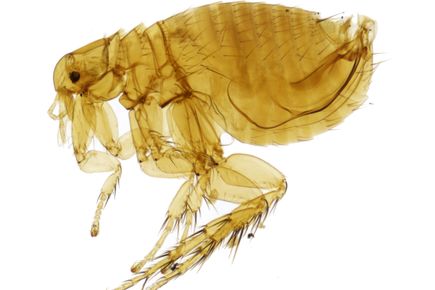Antimicrobial "smart" surfaces are a potential method to reduce microbial contamination of surfaces in healthcare, and to combat the growing threat of antimicrobial resistance. These surfaces could reduce microbial attachment, actively destroy microbes, and disrupt the microbial habitat. What sorts of surfaces are effective, and how do they work? How can the latest molecular science and engineering solutions for antimicrobial surfaces be exploited, whilst considering costs for manufacture, distribution and use?
Publications
Research champion
-
Gerald Larrouy-Maumus
/prod01/channel_3/media/images/people-list/Gerard-Larrouy-Maumus_300X400.jpg)
Location
3.42 Flowers building
South Kensington CampusResearch interests
- Mycobacterium tuberculosis
- Bacterial pathogens
- metabolomics, transcriptomics, proteomics and lipidomics
Academic expertise
Alexandra Porter
/prod01/channel_3/media/images/people-list/Professor-Alex-Porter-(Oct-2018)--005--tojpeg_1549975985526_x2-(1).jpg)
Alexandra Porter
Materials
Ali Salehi-Reyhani
/prod01/channel_3/media/images/people-list/Ali-Salehi-Rehani-300X400.jpg)
Ali Salehi-Reyhani
Surgery & Cancer
Alison Holmes
/prod01/channel_3/media/images/people-list/Alison-Holmes-300X400.jpg)
Alison Holmes
Infectious Disease
Andreas Kafizas
/prod01/channel_3/media/images/landscape-3000X2000/Andreas_Kafizas_300X400.jpg)
Andreas Kafizas
Chemistry
Cecilia Mattevi
/prod01/channel_3/media/migration/institute-for-molecular-science-and-engineering/portrait--tojpeg_1581430314699_x4.jpg)
Cecilia Mattevi
Materials
Daryl Williams
/prod01/channel_3/media/migration/institute-for-molecular-science-and-engineering/daryl-williams--tojpeg_1471621811084_x4.jpg)
Daryl Williams
Chemical Engineering
Huw Williams
/prod01/channel_3/media/images/people-list/huw_williams_300X400.jpg)
Huw Williams
Life Sciences
Jason Riley
/prod01/channel_3/media/images/people-list/Jason-Riley_300X400.jpg)
Jason Riley
Materials
Jessica Wade
/prod01/channel_3/media/images/people-list/17_350-ICL-JWade-024.jpg)
Jessica Wade
Materials
Joao Cabral
/prod01/channel_3/media/images/people-list/Joao-Cabral-300X400.jpg)
Joao Cabral
Chemical Engineering
Jonathan Otter
/prod01/channel_3/media/migration/institute-for-molecular-science-and-engineering/IPS-2016--t_1494336309578_x1--tojpeg_1534508609477_x4.jpg)
Jonathan Otter
Medicine
Maxie Roessler
/prod01/channel_3/media/migration/institute-for-molecular-science-and-engineering/MMR_IES_cropped--t_1554822426376_x1--tojpeg_1560427819459_x4.jpg)
Maxie Roessler
Chemistry
Naomi Nakayama
/prod01/channel_3/media/images/people-list/Naomi_Nakayama_300X400.jpg)
Naomi Nakayama
Bioengineering
Nic Harrison
/prod01/channel_3/media/migration/institute-for-molecular-science-and-engineering/Nic-Harrison--tojpeg_1449500245574_x4.jpg)
Nic Harrison
Chemistry
Peter Petrov
/prod01/channel_3/media/migration/institute-for-molecular-science-and-engineering/Ppetrov--tojpeg_1490015778024_x4.jpg)
Peter Petrov
Materials
Ramesh Wigneshweraraj
/prod01/channel_3/media/migration/institute-for-molecular-science-and-engineering/photo-me-tojpeg-1525783826903-x1_1618499164329_x4.jpg)
Ramesh Wigneshweraraj
Infectious Disease
Saif Haque
/prod01/channel_3/media/migration/institute-for-molecular-science-and-engineering/pwpimage-(2)--tojpeg_1509360955922_x4.jpg)
Saif Haque
Chemistry
Sandrine Heutz
/prod01/channel_3/media/migration/institute-for-molecular-science-and-engineering/sandrine-heutz--tojpeg_1457364806421_x4.jpg)
Sandrine Heutz
Materials
Serafim Kalliadasis
/prod01/channel_3/media/migration/institute-for-molecular-science-and-engineering/serafim-kalliadasis--tojpeg_1449827767409_x4.jpg)
Serafim Kalliadasis
Chemical Engineering
Timothy Rawson
/prod01/channel_3/media/migration/institute-for-molecular-science-and-engineering/headshot-tojpeg-1569324795715-x1_1618491472104_x4.jpg)
Timothy Rawson
Infectious Disease
Yuval Elani
/prod01/channel_3/media/images/people-list/Yuval_Elani_300X400.jpg)
Yuval Elani
Chemical Engineering



